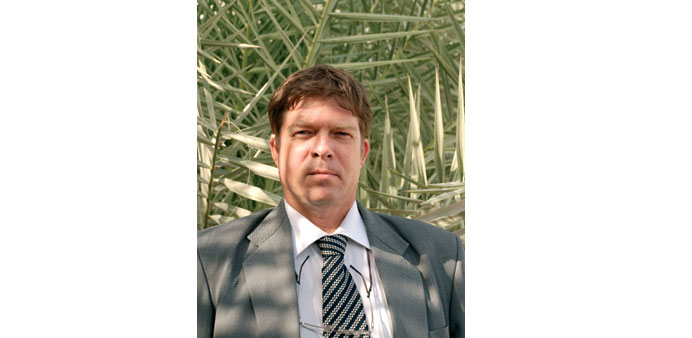By Joey Aguilar/Staff Reporter
No donor has come forward to offer the funds needed for “a highly important environmental initiative” that will significantly sequestrate carbon emissions not only in Qatar but also globally, a Unesco official has said.
Dr Benno Boer, Unesco’s ecological sciences adviser in the Arab region, told Gulf Times that those who have been approached and informed about the extent of the project in Qatar, Saudi Arabia and the United Arab Emirates have not yet made funding available for the development of floating mangrove prototypes. “This is disappointing, but we will not give up approaching those who have the funds and who should have an interest in this important innovative technique for carbon sequestration,” he said.
Unesco and its private partners in Qatar recently launched a floating mangrove trial at Lusail Marina. Dr Boer disclosed that these plants survived well with seawater irrigation, without using any freshwater.
Around $2.5mn is required to fund the five-year project, including running costs and investments needed for materials and students. It is expected to yield actual results on how much carbon and marine pollutants can be sequestrated by the floating mangroves based on a series of scientific studies.
The project will also provide answers on how feasible the project financially is, what is the best design and engineering technology, and how the systems can be turned profitable through biosaline marine agriculture, the production of biofuel and other cash products.
“The prototypes could be produced by Gulf Arab PhD and MSc candidates with science-based accurate results,” he added.
Asked how unique the floating mangrove project was, Dr Boer cited the success achieved by Richart Sowa, who developed floating islands in Mexico.
Sowa built his house on an island, floating on empty water bottles with mangroves being used for greenification. Dr Boer wants to invite Sowa to Qatar, believing that his experience and knowledge will be useful for future plans and discussions with students and professors.
However, the Unesco adviser said the climatic conditions in Mexico were different from those in Qatar, with the latter recording very high summer temperatures. “Qatar also has higher seawater salinity levels, much less precipitation, higher transpiration and evaporation rates.”
He cited the advantages of floating mangroves as compared to other carbon sequestrating systems such as seagrass, salt marsh, other types of forests and even natural mangroves.
Dr Boer explained that floating mangroves could be transported to the world’s vast sub-tropical and tropical oceans while natural mangroves flourished only in sheltered lagoons.
Due to these geographical limitations, he said the available area for natural mangroves in the world was limited to a narrow coastal strip, measuring only about 15mn hectares. Earlier, it used to be 32mn hectares. “With floating mangroves, it can theoretically cover larger areas with hundreds of thousands of square kilometres.”
“This trend should be reversed for many reasons, including climate-change mitigation via carbon sequestration, biodiversity conservation and coastal protection,” said Dr Boer, stressing that funds should be available first to develop the prototypes.
He admitted that floating mangroves would not solve the world’s climate change issues only through carbon sequestration. But once the prototypes exist, scientific data will be collected to further develop and improve these prototypes, which can be very useful in the future.
“Our system has the advantage of trying to get carbon out of the atmosphere that has already been put into it, whereas other carbon-offset projects are aiming to reduce the amount of carbon that is being released into our planet’s atmosphere,” Dr Boer said.

Dr Benno Boer


